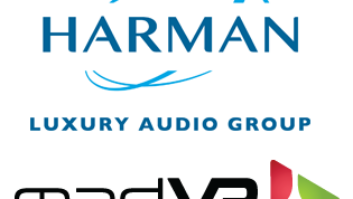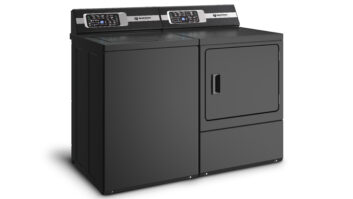TWICE: As TVs get thinner, devices incorporate more functions and floor-space requirements shrink, do we need to re-think the traditional store format?
Douglas Moore, Sears Holdings: The longer-term trend may possibly be technology consolidating into fewer SKUs that people really love. Right now the gaming business is defined by five consoles, and Apple essentially runs on 11 SKUs. It is a distinction that we didn’t have before. HP used to come and say “Choose any of our 68 printers,” and we would choose 20.
Apple built its model on limited variation. All of the variation is in the 3,000 accessories and lifestyle choices surrounding its core products, which does suggest that the retail model that supports lots of SKUs and big cube items is giving way toward fewer SKUs in less space. I think we’ve seen a lot of movement in the marketplace toward smaller stores because physically you don’t need the space. That would drive costs down and give us all a chance to make money going forward, although the transition is very painful.
Those that are in those businesses, as we all know, like to operate on a pretty low operating margin when it comes to selling those 11 or five SKUs. It’s a complete reversal of activity, whereas we used to make a lot of money on lots of hardware, and we’d let the assortment sort of self-destruct over time. Now the consumers are choosing. They want five different gaming consoles, and that’s it. They want 11 iPods plus maybe three or four other MP3 players and that’s it.
The interesting elephant in this room is we’ve now talked more about things that aren’t TVs and computers for the first time in memory. Those are smaller economics and the honest truth is those are smaller businesses. These are smaller dollars, smaller margins, less service, less warranty and the dynamics of the industry are never coming back, at least not in the same way. It will be very different.
Dave Workman, PRO Group: When you look at the retail stores, the old school of retail was really product-centric. Now, with the Internet and excellent retailers like Amazon, the dynamic in the market is that if you are just dwelling on the product alone, there isn’t enough margin to keep a traditional brick-and-mortar retail operation in business. I think there will be a paradigm shift for retailers over the next five to 10 years, and those that will come out of this as successful retailers are those that move from a product-centric to an experience-centric merchandizing scheme.
Part of that is a smaller footprint because you don’t necessarily need the size that you needed before. It’s not about having 600 televisions necessarily and maybe all of the choices that are available everywhere, because the thing that Apple has figured out, and which has resonated so much with the consumer, is the experience at the Apple Store. It’s not a product showcase as much as it is an experience people continue to come back for and talk about.
Retail has to go through that revolution because there are forces in the marketplace dictating that if you’re going to stay in business you have to do something different. That difference is about the experience, not just shifting your gondolas this way or that, but literally how the consumer perceives the experience they come out with when they leave that store. I don’t think it necessarily has the product displayed the way that we’re accustomed to. Somebody is going to figure that out and I think that’s really where growth in retail can come from.
Irynne MacKay, Circuit City: Circuit City has been commenting on what we call our 20K stores, which as the name implies are 20,000 square feet vs. our typical 30,000- to 35,000-square-foot store. The selling space is about the same size; what shrunk is the back room, and it’s because every product has shrunk. To Doug’s point about all of the little products, to me what this means is that consumer electronics has permeated our everyday life. It doesn’t just sit in the living room, and it doesn’t just sit in my car on a dash. It actually lives with me, and it has generated so much interest in consumer electronics.
In our 20K format we have what we call Experience Zones, circular areas for every one of our major categories — be it gaming, portable gear, televisions, PCs or imaging — where you can look, try, feel, experience, enjoy and learn. If you’re not inside the amphitheater, you can be outside watching other customers having fun with a Wii or a PS3, or whatever.
What’s interesting is that every one of these products still goes in your living room. Internally, we have GM responsibilities for “In the living room,” “In the office” and “On the go,” although a lot of these things all go in the living room anyway. The raw economics of our TVs with their high ASPs [average selling prices], high growth rate and the broadcasting mandates that are coming down the pike all say that the television is still a big part of our business, even though we may talk about all of the little things. All that means is that digital technology is part of our lives.
Noah Herschman, Amazon.com: Dave, to your point about the Apple Stores, they’re really not that much different than when you and I were on the sales floor in 1926. I don’t know about you, but we used to sit around and listen to all sorts of music. We used to talk about the music, and we were enthusiastic and passionate about the content. The Apple Store really has taken that to another level, but I think generally speaking it’s the same MO.
Workman: You’re right.
Herschman: There’s a lot of community out there that still loves music, movies, games and all of these other things, and it’s really not just about selling a thing at a price. It’s selling the experience.
Fred Towns, New Age Electronics: We all talk about the Apple Store, but the one thing we all forget is to look at the average selling price of an Apple basket. It’s so much higher than a traditional retailer. When you look at an Apple notebook computer, it’s over $2,000. When you look at their desktops, which they’re still selling in a declining market, it’s $2,700 for some applications. We also need to look at the size of their monitors. They’re getting bigger and bigger, and now they’re streaming video to TV. You know where they’re going with that.
Still, the key is the experience and the prestige of ownership, but you pay a premium to get that.
Steve Caldero, Ken Crane’s: Let’s not deify Apple. They’re also the people that invented the Newton. They’ve had their stumbles. Eight years ago if you were going to move your 401(k) money into a technology stock, would it have been Rio or would it have been Apple? Apple was trading at about $3 a share at the time and losing market share in computers rapidly.
What they did with the iPod was create not a product but an experience. It was an MP3 player, but they created an experience that made it easy. When it first came out you had to have an Apple computer, it wouldn’t work with a PC. They just did it differently.
That’s what is missing a lot at retail. We don’t get the opportunity to create that experience. Manufacturers do a lousy job of giving a retailer the tools to create the experience. We have a major brand we carry that Fred works with as well, that has had Internet-capable TVs for two years. We’ve been asking for two years for them to give us the tools to actually show someone a demo of that. We’re still waiting.
Workman: I think there’s never been greater pressure on the retailer to be clearly different or at least defined in the mind of the consumers as to who and what you do and why you’re different than the guy here versus the guy over there. We’ve been at product showcases where the focus is less on the differentiation between the retailers than on who can carry 60 SKUs vs. 50 SKUs.
If you think about the history of this business, whenever we go through a product boom there is kind of a land grab rush-to-the-bank mentality where people are focused less on differentiating themselves in the market and more on how much they can capitalize and how quickly. Then, during periods when the industry starts to flatten, differentiation is the key, and that’s when we end up with the periods of consolidation that we’ve historically gone through. It happened in the Eighties and it happened in the Seventies, whether it was following the VCR or following the DVD player.
The retailers that come out on the other side of HDTV will be stronger, better positioned retailers but also better defined with the consumer. I think the retailer is more the brand in the market-place today than ever before, and in some instances the manufacturer and the retailer are the same, as in the case of Apple. That to me is the biggest challenge we’re facing over the next five years. It’s not about whether or not we’re going to have a lot of stuff to sell. We are. Hopefully we’ll make it simpler, and it will grow the market accordingly. But ultimately we will face the point where we have to further define ourselves and create that experience which resonates with the consumer. You see it right now. If you can’t resonate with the consumer, they don’t come to you.
TWICE: To Doug’s point about smaller retail footprints, what happens to the big box format?
Moore: Big boxes are costly to run. It’s hard to get out of them, and people don’t want to re-occupy them with new businesses. It’s a real structural issue and a cost problem that many of us in this room are facing, whether you run ten stores or a thousand. That makes people like Amazon very nimble in this situation and Apple as well. Coming late to this game allows you to structure cost more relevant to the current requirements in the market than the requirements of the ’80s, ’90s and earlier this decade. It’s going to be an exciting time to sell stuff, but the cost structure is under increasing pressure.
Complicate that with what we talked about with the labor force, and you’ve got some interesting headwinds. Throw in a little macroeconomic stumbling for the next six to twelve months, and you’ve got some interesting dynamics that will play out very differently. In this room a year from now I think we’ll have some real insight into what that meant. It won’t all be terrific for everybody in the room. I think it will be tough on all of us to different degrees.
Jeannette Howe, Nationwide Marketing Group: The most successful dealers have been chameleons. They’ve had to change when the market changed, and they’ve found ways to do that. When I started in this industry our biggest threat was mail order, and at this point I’d like to see mail order come back.
Our most successful dealers are hybrid dealers. They’re dealers who are able to deliver the experience and go into the home and re-evaluate it by taking into account the way a person lives within their home.
That ability to be a chameleon is going to be more important. Look at Best Buy. It started as a warehouse store. They didn’t have sales people, it was self-serve. Now they have Pacific Sales, they have AudioVisions, they have Magnolia Audio Video. They’ve created an experience, and right now I would say the specialty industry is kind of chasing us. It’s going to be really scary when we’re chasing them — when they’re delivering a better experience than the specialty dealer within that market.
Herschman: Some of our very best partners on our site, who really do well and offer the customer great value, great selection and great products, are Vann’s, Huppin’s/OneCall, Crutchfield, Sixth Avenue Electronics and Electronics Expo, all PRO Group members. There is definitely a hybrid going on, and some people are leading the charge and others are not.
Howe: Right, and the ones that don’t lead the charge are going to get left behind.
Workman: The rub on service, which retailers sometimes have a tough time understanding, is that you could go broke trying to advertise it to the consumer. It’s not a product that you can advertise to create the desired results. Nordstrom’s never advertises that it has great service. Apple doesn’t talk about the experience in their stores, and yet at the same time a lot of the opportunity and the differentiation is through the experience.
The interesting thing is that it obviously is an experience, and how that gets communicated is different from the traditional world of product advertising. You need the products to bring the customer into the store, but you have to ultimately create an experience, which at some point over time defines you in the marketplace. I’ve never seen a successful example of somebody that could apply a bunch of dollars to a service and have it resonate with the consumer. Consumers don’t get that. They only get an experience after it has happened. Rarely is it on the front end because they relate to the product. The experience is the ultimate satisfaction. That creates the value for the brand.
MacKay: The definition of experience is broad. The customers are moving quicker and are always going on the Internet. I really like your chameleon comment, Jeannette. At Circuit City we have to be ready to fulfill every one of those needs. Forty to 60 percent of our sales are actually Web-originated. Quite a number of folks have already done the research before they come into our store. Those who made their purchase online have the option to pick it up at the store with our 24/24 promise, and while they’re there they can get the full experience. There are some people that could DIY-it and put their TV up on the wall, and there are other people that want the full service.
What’s interesting as a retailer is being able to provide that suite of offerings for the customer to shop and then buy and ultimately to enjoy, whether or not we help them along every path or they just come in the store and do it themselves. There are many permutations right now. If you think about the roadmap here for digital technology conversion for TVs and you think about your mother, there’s a big opportunity here in terms of customers for whom you could say, “Wow, the full suite of services really does help.”
Towns: Another interesting thing is that most of the people in this room have services that go into someone’s home. With Apple, when you need service, if you want to learn about your product, or you have a problem with trying to understand how to make something work, you’ve got to make an appointment, go to their store, and sit and wait to get your time in queue. I think there is an opportunity for the retailer to capitalize on the fact that they go into the home. That offers a lot of opportunity.
TWICE: And you don’t need a big storefront to do that.
Edward Maloney, Cowboy Maloney’s Electric City: The challenge we have as a small retailer is getting younger folks into the retail business, since a lot of these new technologies are geared toward the younger folks. Saying we’re going to give you a job but you’re going to work weekends and nights is not the most enticing recruitment story you can give somebody. We do need to start looking at it, if anybody has any idea about how to bring people in. My children and my brothers’ children have all decided that they didn’t want to work as hard as dad. I’m sure you larger folks have the same situation and that it’s a challenge for all of us.












